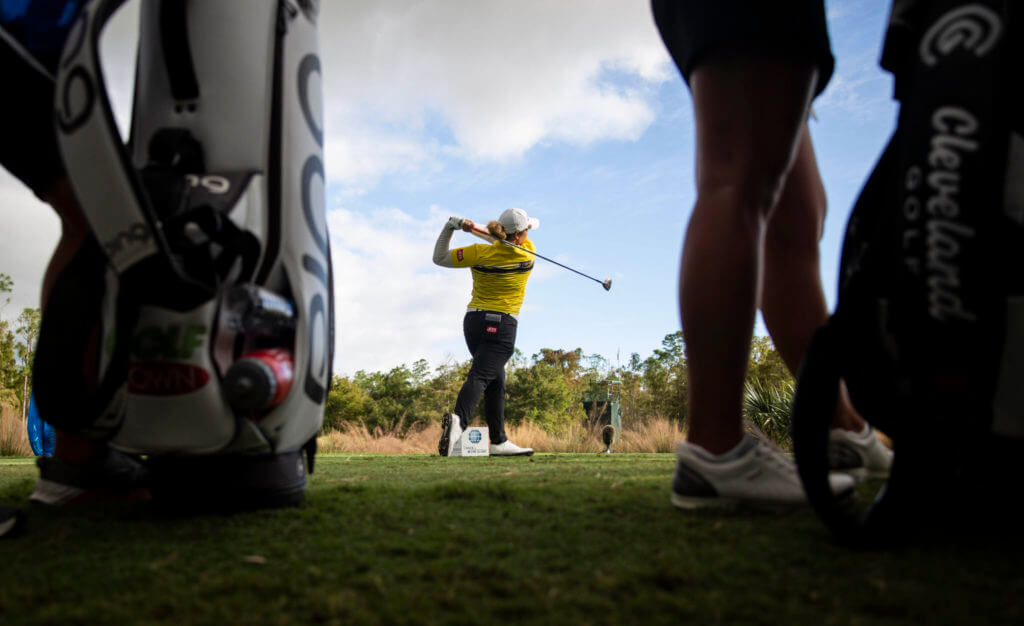
Uttering the words, “You’re fired,” can take on an array of different feelings for someone.
Depending on one’s personality, they may relish in the power they wield in determining the future of someone’s livelihood. For someone like myself, telling someone it’s no longer working requires me to amp myself up where I look in the mirror and say, “Anya, you can do this. You can fire this person.”
This is the position that I was put in as a professional golfer. There were times that I stayed in a caddie-player relationship far longer than I should have, resulting in on-course frustrations, along with severing a relationship with someone that otherwise could have been salvaged had I just said, “This isn’t working anymore.”
But the first time I fired a caddie on the spot, without a breath of hesitation was in Decatur, Illinois, at a Symetra Tour event. It was my second year playing professionally, and I had begun to learn the ins-and-outs of the player life, and what type of caddie I worked best with.
MORE FROM ANYA: Former LPGA player picks up a loop, gains even more appreciation for caddies
I’ll admit, I was demanding and expected perfection, unfairly so. My desire to succeed outweighed my better judgement of what type of expectations were reasonable, and simultaneously added pressure to every swing I took.
So any failure I had on the golf course meant it was everyone’s failure, meaning my caddies would unfairly get a lot of blame.
At this tournament in Decatur though, I learned a lot about myself: 1. how to fire someone; and 2. I gained a better understanding about the type of caddie I needed.
It all started with a text during a practice round day, “Anya, what time do you want me at the course?”
“7 a.m. I want to get done early for the day.”
“Can we do 8 a.m., instead?” he replied.
This was our first week on the course together, and having a caddie try to negotiate what time they would arrive to the course made me feel on edge.
RELATED: Zach Johnson parts ways with Damon Green after 15 years, two majors
“No, 7 a.m., sharp,” I responded.
He arrived the next day on time and I told him, “Adam, from now on, if I say a time to meet me at the course, please respect that and don’t try to renegotiate the time.”
This was taken in good stride it seemed, and I felt I made my point clear. We made the cut, and I positioned myself well into the weekend.
On Saturday, torrential rain made its way through and play was suspended. Sunday morning, every player and caddie woke up to see an email from the tour that there would be a shotgun start on at 10 a.m. I called Adam, and told him to meet me at the course at 8:45.
“No problem,” he said.
To save you the anxiety of what I felt while I was warming up, Adam didn’t arrive until precisely two minutes before the shotgun start. When he stepped up on the tee, I looked at him and said, “Don’t say a word today.”
That day I walked off every yardage, read every putt, checked the wind, and made every decision on the course. Adam walked behind me silently, and to my own surprise, I shot 3 under (69), and wrangled my way into a top-10 finish.
As we walked to the parking lot, Adam said, “Great playing. See you next week?”
READ: ‘This is how I became a PGA Tour caddie’ | The unwritten rules of caddying
For the first time in my career that day I did not have it in me to draw it out, or make up a reason to let someone go like, “It’s not you, it’s me.”
Instead, I looked at him and said, “I don’t think we’re a good match.”
In that parking lot, I grew up as a player, and I like to believe Adam grew up as a caddie. I earned my tour card a year later, and Adam went on to caddie for a couple players long-term and had success.
What I learned with him, though, is that I didn’t need a caddie who would do everything for me, and that I could rely on myself to make decisions. I simply needed a caddie who would show up on time, tell a few jokes, and boost my morale when I felt a little down.
Caddying is not an easy job, and the job insecurity caddies feel is likely overwhelming at times. As a player, I had to be cognizant of that, and with that awareness meant not stringing someone along if it wasn’t working. It meant giving them the chance to find a player who benefited from their style of caddying, rather than trying to force myself to adapt to someone.
It meant hurt feelings and bruised egos.
And when it comes to it, caddies and players have their best interests in mind: meaning, the caddie wants to help a player succeed because when he or she does, the caddie benefits. For the player, the caddie is part of the puzzle to finding success on the course.
Unfortunately, the piece doesn’t always fit, and you have to keep searching until you find the one that does.